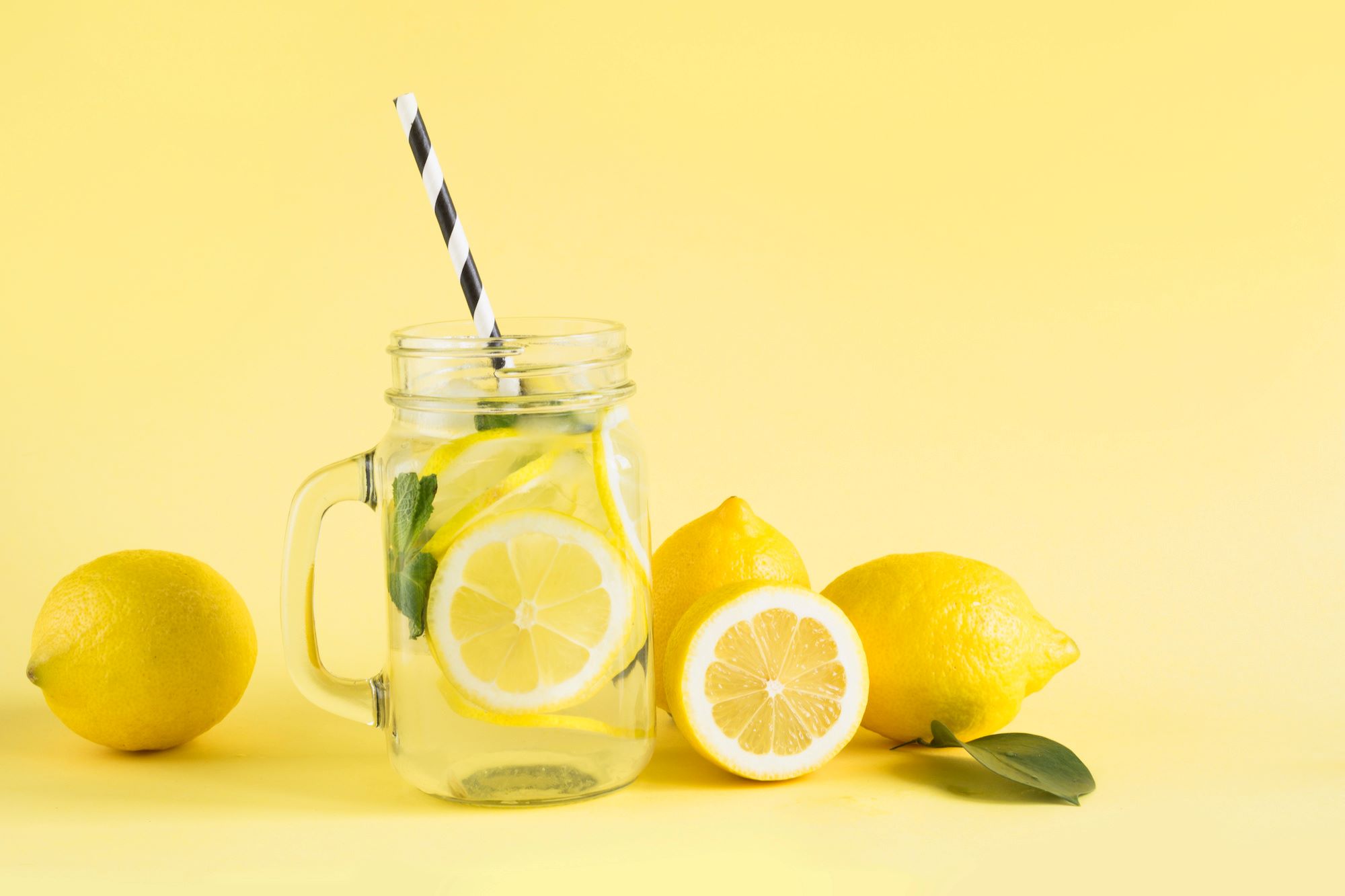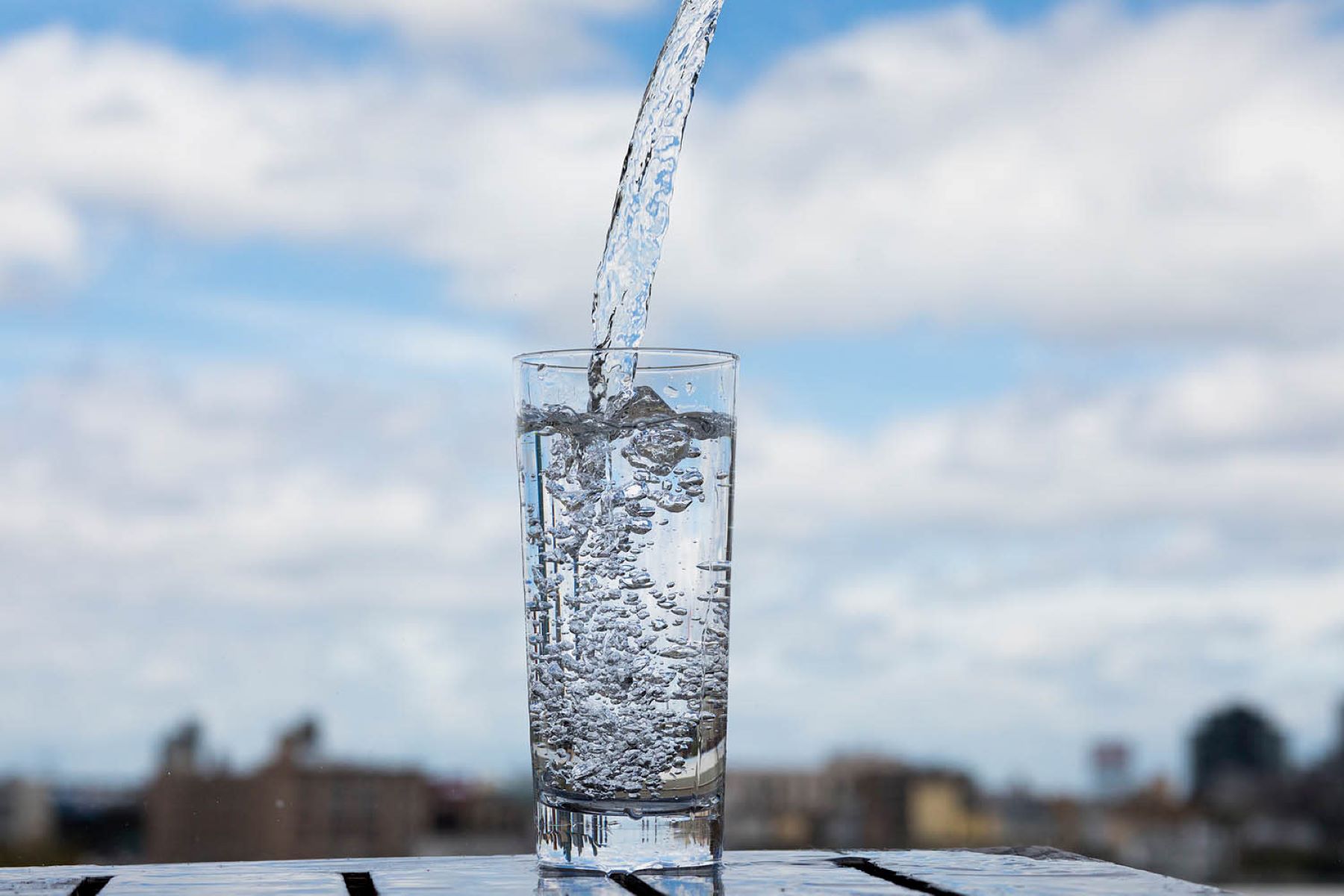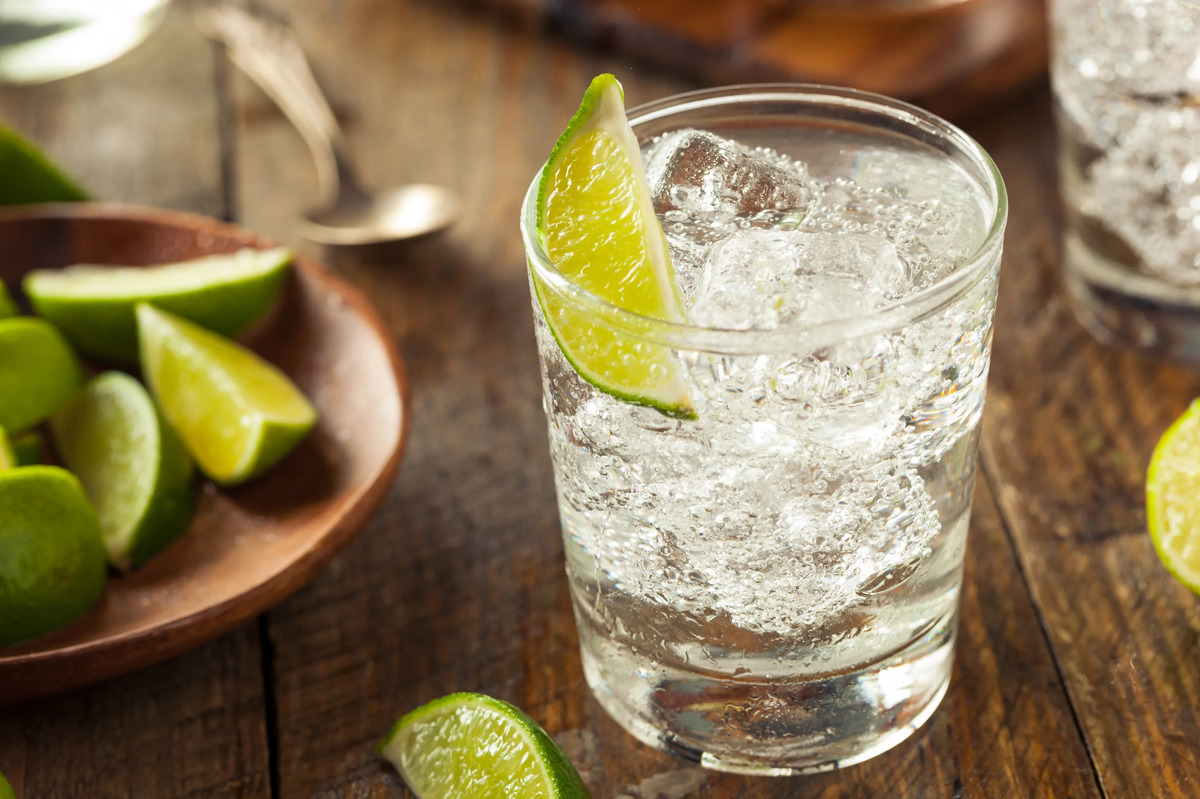Home>Furniture & Design>Interior Design Trends>How Many Calories Is A Glass Of Lemonade


Interior Design Trends
How Many Calories Is A Glass Of Lemonade
Modified: February 18, 2024
Discover the calorie count in a glass of lemonade and stay updated on the latest interior design trends. Find out more about interior design trends and lemonade calories.
(Many of the links in this article redirect to a specific reviewed product. Your purchase of these products through affiliate links helps to generate commission for Storables.com, at no extra cost. Learn more)
Introduction
Lemonade, with its refreshing citrus flavor and thirst-quenching properties, is a beloved beverage enjoyed by people of all ages. Whether sipped on a hot summer day or used as a mixer in cocktails, lemonade has become a staple in many households and social gatherings. However, as with any consumable item, it's essential to understand its nutritional content, particularly the caloric value, to make informed choices about its consumption.
In this article, we will delve into the caloric content of lemonade, exploring the factors that influence its calorie count and comparing the caloric content of different types of lemonade. Additionally, we will provide valuable tips for creating lower-calorie lemonade at home, allowing you to indulge in this delightful beverage without compromising your dietary goals.
Understanding the caloric implications of lemonade consumption is crucial for individuals seeking to maintain a balanced and healthy lifestyle. By shedding light on the nutritional aspects of this popular drink, we aim to empower readers to make conscious decisions about their beverage choices, aligning with their dietary preferences and overall wellness objectives.
So, let's embark on a journey to uncover the mysteries of lemonade's caloric content, unraveling the intricacies that shape its nutritional profile and discovering ways to enjoy this classic drink in a manner that suits individual health and wellness needs.
Key Takeaways:
- Lemonade typically contains around 100 calories per 8-ounce serving, mainly from sugar. Be mindful of portion sizes and consider homemade options for lower-calorie alternatives.
- Factors like sweeteners, portion size, additives, and preparation methods influence the caloric content of lemonade. Consider natural sweeteners and fresh fruit juices for a healthier twist.
Read more: How Many Calories Is A Glass Of Milk
The Nutritional Content of Lemonade
Lemonade, a quintessential summertime beverage, offers a delightful combination of tangy citrus flavor and thirst-quenching refreshment. However, beyond its sensory appeal, it's essential to understand the nutritional composition of this beloved drink, particularly its caloric content. A typical 8-ounce serving of commercially prepared lemonade contains approximately 100 calories, primarily derived from sugar, which is a key ingredient in most traditional recipes. This caloric value can vary based on factors such as the type and quantity of sweeteners used, as well as the inclusion of additional ingredients such as fruit juices or flavorings.
In addition to its caloric content, lemonade also provides a modest amount of vitamin C, thanks to the natural acidity of lemons. This essential nutrient contributes to the body's immune function and overall well-being. However, it's important to note that commercially prepared lemonades may contain added sugars and preservatives, which can impact their overall nutritional value. As a result, individuals seeking a healthier alternative may opt for homemade lemonade, allowing them to control the ingredients and tailor the beverage to their dietary preferences.
When considering the nutritional content of lemonade, it's crucial to be mindful of portion sizes, as larger servings will naturally contain more calories and sugar. Additionally, individuals with specific dietary considerations, such as those managing their sugar intake or monitoring their overall caloric consumption, should exercise caution when enjoying this beverage. By being aware of the nutritional aspects of lemonade, individuals can make informed choices that align with their health and wellness goals, ensuring that this timeless drink can be savored responsibly and enjoyed as part of a balanced diet.
In summary, while lemonade offers a delightful burst of citrus flavor and a refreshing respite from the heat, it's important to be cognizant of its nutritional content, particularly its caloric value and sugar content. By understanding the composition of this beloved beverage, individuals can make informed decisions about its consumption, allowing them to savor the essence of summer while maintaining a balanced approach to their dietary choices.
Factors Affecting the Caloric Content of Lemonade
The caloric content of lemonade is influenced by several key factors, each playing a significant role in shaping the nutritional profile of this beloved beverage. Understanding these factors is essential for individuals seeking to make informed choices about their consumption of lemonade and its impact on their overall dietary goals.
-
Sweeteners and Sugar Content: One of the primary determinants of the caloric content of lemonade is the type and quantity of sweeteners used in its preparation. Traditional lemonade recipes often call for the inclusion of granulated sugar or simple syrup, which contributes to the beverage's overall caloric value. The amount of sugar added directly correlates to the drink's calorie count, making it crucial for individuals to be mindful of their sugar intake when enjoying this refreshing drink.
-
Portion Size: The serving size of lemonade directly affects its caloric content. Larger portions naturally contain more calories, as they encompass a greater quantity of the beverage. It's important for individuals to be conscious of their portion sizes, particularly when consuming commercially prepared lemonades, which may be served in larger containers or offered in oversized servings at restaurants and events.
-
Additives and Flavorings: The inclusion of additional ingredients, such as fruit juices, flavorings, or sweetened syrups, can impact the caloric content of lemonade. While these additives contribute to the drink's taste and complexity, they may also introduce additional sugars and calories. Individuals should consider the overall composition of the lemonade, taking into account any supplementary ingredients that may influence its nutritional profile.
-
Preparation Methods: The method of preparing lemonade can influence its caloric content. For instance, homemade lemonade allows individuals to control the amount of sweeteners used, offering the flexibility to adjust the beverage's calorie count to align with personal dietary preferences. Conversely, commercially prepared lemonades may contain added sugars, preservatives, or high-fructose corn syrup, which can elevate their caloric value and impact their overall nutritional quality.
By considering these factors, individuals can gain a comprehensive understanding of the elements that contribute to the caloric content of lemonade. This awareness empowers them to make conscious decisions about their consumption of this classic beverage, enabling them to enjoy its refreshing qualities while maintaining a balanced approach to their dietary choices.
Comparing Caloric Content of Different Types of Lemonade
When comparing the caloric content of different types of lemonade, it's essential to consider the diverse array of options available in the market and the variations that exist in homemade recipes. The caloric value of lemonade can vary significantly based on factors such as the type and quantity of sweeteners used, the inclusion of additional ingredients, and the serving size. By examining these variables, individuals can gain insight into the nutritional disparities among various types of lemonade, allowing them to make informed choices about their beverage consumption.
Commercially prepared lemonades, commonly found in grocery stores and convenience stores, often contain added sugars and preservatives to enhance flavor and prolong shelf life. As a result, these products may have a higher caloric content compared to homemade lemonades, which offer greater control over the ingredients used. Additionally, the availability of sugar-free or reduced-calorie options in the market provides consumers with alternatives that align with their dietary preferences, offering a lower-calorie alternative to traditional lemonades.
In the realm of homemade lemonade, the caloric content can be tailored to suit individual preferences. By adjusting the amount of sugar or opting for natural sweeteners such as honey or agave nectar, individuals can create lower-calorie versions of this classic beverage without compromising on taste. Furthermore, the incorporation of fresh fruit juices, such as raspberry or watermelon, can introduce natural sweetness and vibrant flavors to homemade lemonade, enriching the drinking experience while potentially reducing its overall caloric value.
It's important to note that the caloric content of specialty lemonades, such as those infused with herbs or spices, may differ from traditional recipes. For instance, the addition of mint or ginger can impart unique flavors to lemonade, elevating its taste profile while introducing minimal additional calories. Similarly, the use of alternative sweeteners, such as stevia or monk fruit extract, can contribute to lower-calorie variations of lemonade, catering to individuals with specific dietary requirements or preferences.
By comparing the caloric content of different types of lemonade, individuals can gain a comprehensive understanding of the nutritional landscape surrounding this beloved beverage. This knowledge empowers them to make conscious decisions about their lemonade consumption, enabling them to select options that align with their dietary goals and flavor preferences. Whether opting for commercially prepared varieties, exploring homemade recipes, or experimenting with innovative flavor combinations, individuals can savor the essence of lemonade while embracing a balanced approach to their beverage choices.
Tips for Making Lower-Calorie Lemonade at Home
Creating a refreshing and lower-calorie version of lemonade at home is not only achievable but also allows for a personalized approach to tailoring the beverage to individual dietary preferences. By incorporating the following tips, individuals can craft a delightful and guilt-free lemonade experience that aligns with their wellness goals.
Read more: How Many Calories Is A Glass Of Whiskey
1. Opt for Natural Sweeteners
Replace traditional granulated sugar with natural sweeteners such as honey, agave nectar, or stevia. These alternatives impart sweetness to the lemonade while potentially reducing its overall caloric content. Additionally, natural sweeteners offer nuanced flavors that complement the citrus profile of the drink, enhancing its taste without the need for excessive sugar.
2. Embrace Fresh Fruit Juices
Incorporate freshly squeezed fruit juices, such as watermelon, raspberry, or pomegranate, to infuse natural sweetness and vibrant flavors into the lemonade. By leveraging the natural sugars present in fruits, individuals can reduce the reliance on added sweeteners, resulting in a lower-calorie yet equally satisfying beverage.
3. Explore Herbal Infusions
Experiment with herbal infusions, such as mint, basil, or lavender, to introduce aromatic and refreshing elements to the lemonade. Herbs can elevate the drink's sensory appeal while adding minimal calories, offering a delightful twist to the traditional recipe without compromising on flavor.
4. Consider Citrus Zest
Incorporate citrus zest, such as lemon or lime zest, to enhance the citrus essence of the lemonade without the need for additional juice or sweeteners. The zest provides a burst of flavor and fragrance, elevating the drink's profile while contributing minimal calories, making it an ideal option for those seeking a lower-calorie alternative.
Read more: How Many Calories Are In A Glass Of Wine
5. Dilute with Sparkling Water
Blend the lemonade with sparkling water to create a refreshing and effervescent variation. The addition of sparkling water not only reduces the overall caloric density of the beverage but also introduces a delightful fizz, transforming the lemonade into a light and invigorating refreshment.
By implementing these tips, individuals can craft a lower-calorie lemonade at home, tailored to their taste preferences and dietary considerations. This approach allows for the enjoyment of a classic beverage while aligning with individual wellness objectives, demonstrating that indulgence can harmonize with mindful consumption.
Conclusion
In conclusion, the caloric content of lemonade is a crucial aspect to consider for individuals striving to maintain a balanced and health-conscious approach to their dietary choices. By unraveling the intricacies of lemonade's nutritional profile and exploring the factors that influence its caloric value, we have gained valuable insights into the diverse landscape of this beloved beverage.
From understanding the impact of sweeteners and portion sizes to comparing the caloric content of different types of lemonade, we have delved into the multifaceted nature of this timeless drink. Whether enjoying commercially prepared varieties or crafting homemade renditions, individuals can leverage this knowledge to make informed decisions about their lemonade consumption, aligning with their wellness goals and flavor preferences.
Furthermore, the exploration of tips for creating lower-calorie lemonade at home has empowered individuals to embark on a journey of culinary creativity, allowing them to tailor this classic beverage to their dietary preferences. By embracing natural sweeteners, fresh fruit juices, herbal infusions, and innovative flavor combinations, individuals can savor the essence of lemonade while embracing a lower-calorie alternative that resonates with their taste preferences and nutritional objectives.
Ultimately, the essence of lemonade extends beyond its sensory appeal, transcending into a realm where indulgence and mindful consumption converge. By being cognizant of the caloric implications of lemonade consumption, individuals can navigate their beverage choices with confidence, ensuring that this timeless drink remains a source of refreshment and enjoyment while harmonizing with their overall wellness journey.
As we bid adieu to this exploration of lemonade's caloric content, let us carry forward the understanding and appreciation gained, allowing it to inform our choices and enrich our experiences. Whether sipping on a chilled glass of homemade lemonade on a sunny afternoon or relishing a carefully selected commercial variety, may the essence of lemonade continue to evoke joy and satisfaction, resonating with the harmony of mindful indulgence and well-being.
Frequently Asked Questions about How Many Calories Is A Glass Of Lemonade
Was this page helpful?
At Storables.com, we guarantee accurate and reliable information. Our content, validated by Expert Board Contributors, is crafted following stringent Editorial Policies. We're committed to providing you with well-researched, expert-backed insights for all your informational needs.














0 thoughts on “How Many Calories Is A Glass Of Lemonade”